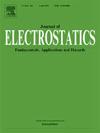A review on advancements in atmospheric plasma-based decontamination and drug delivery (invited paper)
IF 2.1
4区 工程技术
Q3 ENGINEERING, ELECTRICAL & ELECTRONIC
引用次数: 0
Abstract
Over the past two decades, nonthermal plasma has emerged as a promising tool for various medical applications, including wound healing, blood coagulation, decontamination, and cancer therapy. This review provides a comprehensive analysis of advancements in the field, detailing both fundamental mechanisms and recent technological developments. The medical efficacy of nonthermal plasma is primarily attributed to its physical effects, such as electric fields and ultraviolet radiation, as well as its chemical effects, driven by the production of reactive oxygen and nitrogen species (RONS). These reactive species play a critical role in inducing apoptosis and oxidative stress, thereby affecting cellular viability. Additionally, nonthermal plasma is gaining attention as a novel drug delivery system, offering targeted therapeutic potential for various diseases. However, while RONS are effective in removing harmful cells, their broader applicability to neurological and other non-cancerous diseases remains uncertain. This review explores the feasibility of plasma-based drug delivery as a controlled mechanism for therapeutic applications beyond oncology. By examining the latest innovations and challenges in plasma medicine, we aim to highlight its potential for expanding treatment modalities and addressing unmet clinical needs.
大气等离子体净化与给药技术进展(特邀论文)
在过去的二十年里,非热等离子体已经成为各种医学应用的有前途的工具,包括伤口愈合、血液凝固、净化和癌症治疗。本综述全面分析了该领域的进展,详细介绍了基本机制和最近的技术发展。非热等离子体的医疗功效主要归因于其物理效应,如电场和紫外线辐射,以及由活性氧和氮种(RONS)的产生驱动的化学效应。这些活性物质在诱导细胞凋亡和氧化应激中起关键作用,从而影响细胞活力。此外,非热等离子体作为一种新型的药物输送系统,为各种疾病提供了靶向治疗的潜力,正受到人们的关注。然而,尽管ron在清除有害细胞方面是有效的,但其在神经和其他非癌性疾病方面的广泛适用性仍不确定。这篇综述探讨了血浆给药作为一种控制机制在肿瘤以外的治疗应用的可行性。通过研究血浆医学的最新创新和挑战,我们旨在强调其在扩大治疗方式和解决未满足的临床需求方面的潜力。
本文章由计算机程序翻译,如有差异,请以英文原文为准。
求助全文
约1分钟内获得全文
求助全文
来源期刊

Journal of Electrostatics
工程技术-工程:电子与电气
CiteScore
4.00
自引率
11.10%
发文量
81
审稿时长
49 days
期刊介绍:
The Journal of Electrostatics is the leading forum for publishing research findings that advance knowledge in the field of electrostatics. We invite submissions in the following areas:
Electrostatic charge separation processes.
Electrostatic manipulation of particles, droplets, and biological cells.
Electrostatically driven or controlled fluid flow.
Electrostatics in the gas phase.
 求助内容:
求助内容: 应助结果提醒方式:
应助结果提醒方式:


